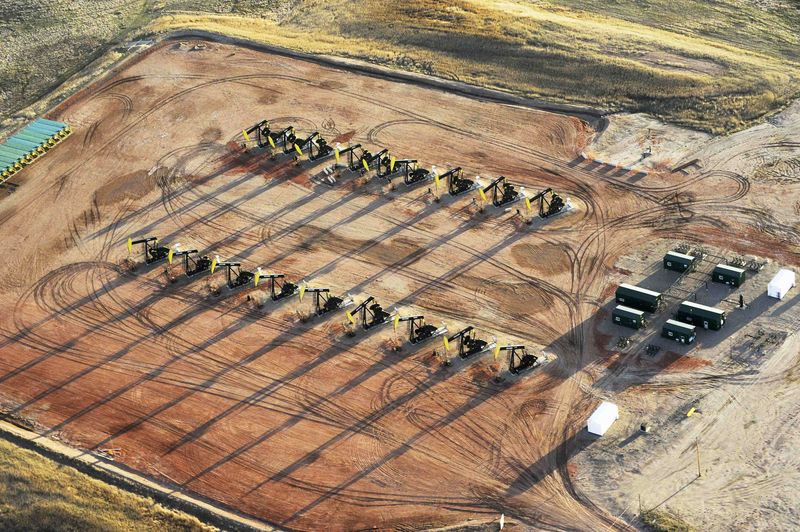By Peter Nurse
Investing.com - Oil prices firmed Wednesday, continuing the recent impressive rebound, as production cuts start to pay dividends while demand shows signs of recovering from the coronavirus-inspired hammering.
AT 9:15 AM ET (1315 GMT), U.S. crude futures traded 2.6% higher at $32.78 a barrel, while the international benchmark Brent contract rose 2.5% to $35.53.
The American Petroleum Association reported a surprise crude inventory draw of 4.8 million barrels for last week late Tuesday, in another indication that the demand/supply imbalance which caused such a dramatic crash in prices is settling.
If the EIA reports a similar number later Wednesday, with the official release, it would be the largest stock drawdown since December. Crude had hit a two-month high late on Tuesday after the API data. However, perhaps most focus will be on the stock numbers for gasoline and other distillates, which will shine more light on how quickly U.S. demand is picking up.
The API's news follows hefty production cuts implemented by OPEC+, after last month’s historic agreement. Reuters reported earlier that Russian output of oil and gas condensate in the first 19 days of May had averaged some 2 million barrels a day less than in March. A group of producer countries led by Saudi Arabia have also pledged further cuts starting in June.
American drillers have also weighed in. The U.S. rig count, an early indicator of future output, fell by 35 to a multi-year low of 339 last week, according to data from energy services firm Baker Hughes.
RBC analyst Michael Tran said in a research note on Wednesday that, as a result, global storage levels have flatlined in recent weeks, rather than rising as expected.
“There’s a lot of optimism baked in here,” said Paul Horsnell, head of commodities research at Standard Chartered (OTC:SCBFF) Bank. “The market has balanced by supply coming off faster than expected.”
At the same time, confidence is growing that demand is rising as many countries start reopening their economies from the restrictions imposed in the height of the coronavirus crisis.
That said, this has to be balanced by some pretty downbeat recent comments from Federal Reserve Chairman Jerome Powell, who said the U.S. economy could "easily" contract by 20-30% amid the pandemic.
He added that the economic downturn might last until late 2021, and a full rebound may not happen until a vaccine is found.
